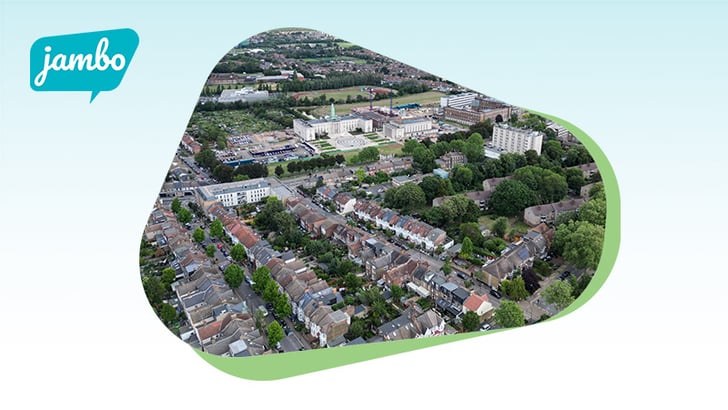
In local government, positive stakeholder relationships improve project outcomes by strengthening legitimacy and public trust, reducing resistance and delays, and improving the quality of decisions through lived experience and local knowledge.
They can accelerate approvals, reduce the risk of legal challenges, improve budget and schedule performance, and help secure funding by demonstrating accountability and community support.
Stakeholders who trust the organization often become credible advocates, amplifying accurate information within their networks, which protects the organization's reputation and contributes to durable, long-term success.
In this post, you'll learn "what is a positive stakeholder relationship," why it's an important consideration, and practical tactics to build and sustain positive relationships. We'll also highlight common mistakes to avoid and share examples you can apply immediately.
What is a positive stakeholder relationship?
Positive stakeholder relationships in local government refer to a trust-based, two-way connection between municipal teams and the groups they serve, such as residents, businesses, non-profits, and regulatory agencies. They are defined by ongoing transparency, mutual respect, and a commitment to genuine collaboration, where stakeholders feel heard and involved in decision-making.
Why does this matter so much for public projects? In the era of collaborative governance, local governments must go beyond top-down planning and instead foster meaningful engagement. When stakeholders are included from the outset, whether through public budgeting discussions, community forums, or inclusive advisory councils, projects are more likely to succeed, reflect actual needs, and gain lasting support.
Positive stakeholder relationship management that focuses on transparent communication, inclusive participation, and timely responsiveness to feedback builds trust and credibility, which in turn makes policies stronger and more enduring in the community.
How to build positive stakeholder relationships when handling local government projects
Building positive stakeholder relationships is about trust, collaboration, and accountability. In local government projects, where decisions directly impact communities, how you identify, engage, and manage stakeholders can determine whether a project succeeds or stalls.
By mapping stakeholders early, engaging them from the start, and maintaining open, ongoing dialogue, project leaders can reduce resistance, foster buy-in, and create stronger, more sustainable outcomes. Consider the following to build positive relationships with stakeholders in your project:
1. Identify your stakeholders early
Begin by mapping out all relevant individuals and groups, whether they're directly affected by the project, influence decisions, or need to stay informed. Prioritize stakeholder groups so you focus efforts appropriately and don't underestimate critical influencers.
Use a stakeholder classification tool, like the Power-Interest Grid, to plot stakeholders based on their influence and interest level, then tailor your engagement accordingly.
Clearly define categories:
- Primary stakeholders: Those directly impacted by the project (residents in a neighbourhood affected by new zoning or a road expansion).
- Secondary stakeholders: Those indirectly or temporarily affected (commuters using an alternative route during construction).
- Key influencers or veto holders are individuals or groups with decision-making authority or significant influence (city council members, regulatory bodies, or community associations).
2. Engage stakeholders from the start
Early engagement builds ownership and sets a collaborative tone. Hold discovery and scoping sessions with stakeholders to understand motivations and establish shared expectations. Lay out the engagement process upfront, clarifying how stakeholder input will shape decisions and what is negotiable. This transparency builds credibility and clarity.
3. Communicate clearly and consistently
Effective communication depends on the right message, format, and timing. Based on stakeholder needs and preferences, choose appropriate communication formats (emails, in-person briefings, online dashboards). Be transparent. Share progress, setbacks, and reasons behind decisions promptly. Make stakeholder engagement visible and responsive.
4. Listen actively and show empathy
Strong stakeholder relationships rely on genuine two-way dialogue. Use surveys, interactive forums, or targeted consultations to gather input and understand concerns. Always acknowledge stakeholder contributions and demonstrate how that feedback has influenced project outcomes. This builds mutual respect and trust.
5. Build trust through openness and accountability
Trust grows through consistent delivery and transparency. Establish trust by recording all stakeholder interactions, promised actions, and decisions in a stakeholder relationship management (SRM) platform. Documenting details reinforces credibility and ensures follow-through. When mistakes happen or project scope changes, call them out early. Show how the team plans to course-correct and invite stakeholder input.
6. Manage expectations and address issues promptly
Proactive management of expectations avoids misunderstandings and conflict. Set clear timelines, decision points, and what stakeholder influence can and cannot achieve. When stakeholders resist or raise concerns, meet them constructively. Discuss what aspects of the project can be adapted and what remains fixed. This creates shared understanding and defuses tension.
7. Maintain ongoing engagement
Trust isn't built in single touch points; it's nurtured over time. Keep stakeholders informed and involved at each project milestone, not just at launch or decision points. Provide continuous opportunities for feedback and course correction based on sentiment tracking or issue logs logged in your SRM system.
Explore how to overcome stakeholder engagement inefficiencies holding government teams back →
The importance of building positive stakeholder relationships
In local government, every project, whether building new infrastructure, updating public policy, or launching a community program, relies on the people it affects. Stakeholders include residents, local businesses, advocacy groups, government agencies, and elected officials.
Establishing positive stakeholder relationships becomes essential because these groups often have diverse and sometimes competing interests. These relationships are built on trust, open communication, and collaboration, and they can determine whether a project succeeds or stalls under resistance.
Strong stakeholder relationships improve how projects are received and enhance the quality, legitimacy, and resilience of government decisions. Let's explore the core importance of positive stakeholder relationships in local government in detail:
Enhanced buy-in and support
When stakeholders are meaningfully engaged, they feel a sense of ownership in the project. Instead of viewing it as something imposed by local government, they see it as something they helped shape. This buy-in reduces friction because community members are less likely to oppose or delay projects when they understand their voices have been heard. For example, engaging residents early in urban planning often results in stronger community backing and smoother project approval processes.
Improved decision quality
Stakeholders provide local insights that government professionals may not have. Residents can highlight real-world challenges, businesses can offer economic perspectives, and advocacy groups can raise issues of equity and accessibility. By incorporating this input, local governments make more informed, realistic, and sustainable decisions. This improves the immediate outcomes and strengthens the long-term impact of public projects.
Greater legitimacy and trust
Transparent engagement fosters legitimacy. When stakeholders can see how decisions are made and how their input was considered, they are more likely to view outcomes as fair, even if compromises are necessary. This builds public trust in government institutions, showing citizens that leaders value accountability and inclusivity. Over time, such trust becomes a foundation for smoother governance and stronger community relationships.
Resilience against conflict
Local government projects are rarely free from controversy. However, proactive engagement reduces conflict by surfacing potential objections early, before they escalate into formal opposition or public outcry. By listening to concerns and adjusting plans accordingly, governments can address problems at their root. This makes projects more resilient, reduces costly delays, and minimizes reputational damage.
Read more on how to manage stakeholder relationships successfully →
Common mistakes to avoid in stakeholder relationship management
Even the most well-intentioned stakeholder engagement efforts can falter. Here are three of the most frequent missteps and how to avoid them:
Failing to identify all key stakeholders
At its core, effective stakeholder management begins with accurate identification. Overlooking groups such as residents, non-profits, developers, or regulatory bodies can leave blind spots that later derail engagement strategies. Use stakeholder mapping and classification tools like the Power Interest Grid to identify stakeholders.
Infrequent or inconsistent communication
Sporadic updates breed uncertainty and erode trust. When communication lapses, stakeholders feel forgotten or excluded. Consistent communication reassures stakeholders that they remain a priority, even when projects face setbacks.
Underestimating the value of stakeholder input
Assuming your initial plan is all that matters ignores the expertise and lived experience that stakeholders bring. Their insights often surface risks and solutions that outsiders might miss. Avoid this by involving stakeholders early and frequently.
Discover steps on how to avoid common stakeholder engagement risks →
Build positive relationships with Jambo SRM
With Jambo's Stakeholder Relationship Management software, you can easily identify every key stakeholder, manage consistent communications, and ensure valuable feedback is never overlooked. Empower your team to build trust, hear every voice, and steer projects toward lasting success.
Get started with Jambo and see how streamlined stakeholder management can be! Book a demo.










